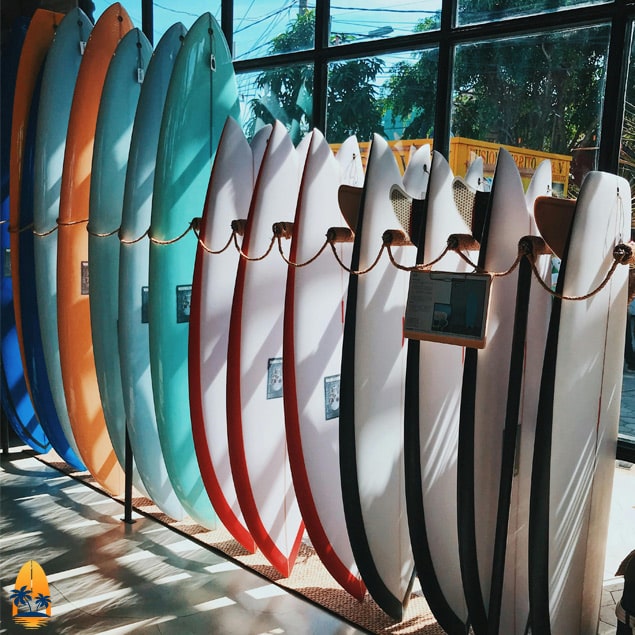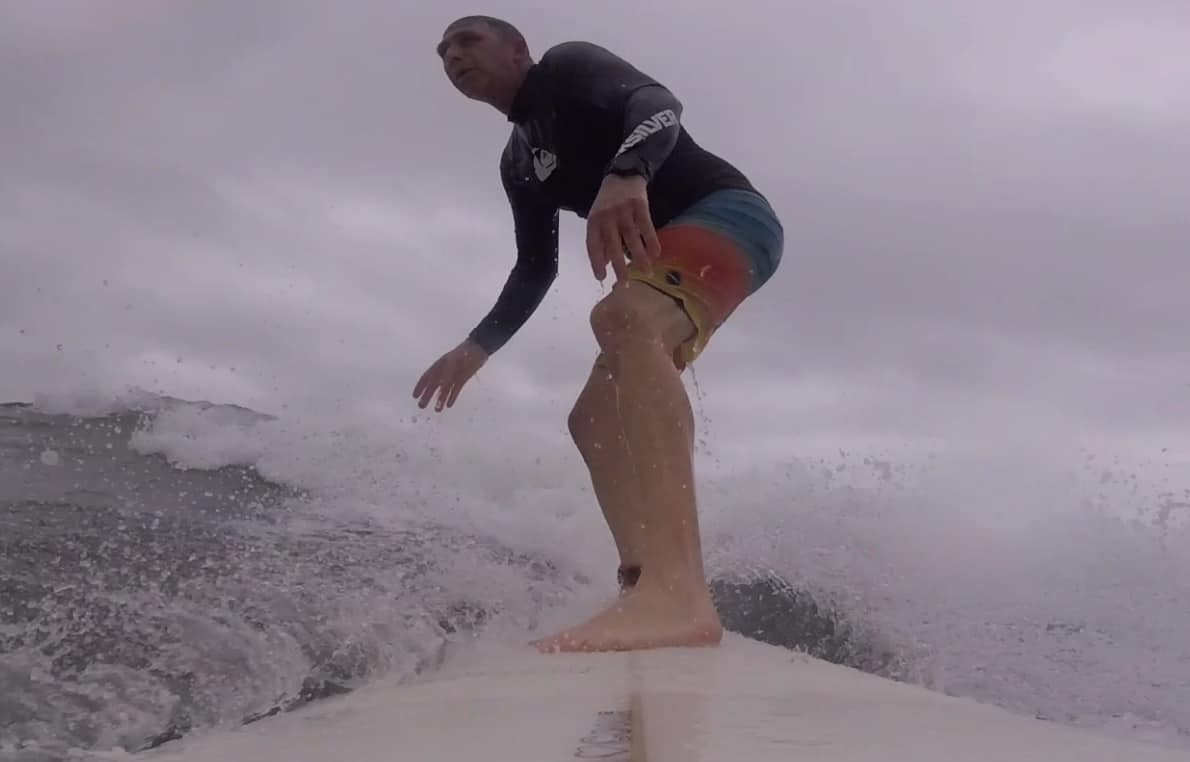Getting ready to buy your first board? So gnarly! Here’s the deal: picking the right surfboard size can be almost a make-or-break for a lot of beginners. Too small, and you’re sinking like a stone; too big, and you’re wrestling a yacht. I’ve been there, flailing on a board that didn’t fit, and trust me, it’s no fun. That’s why I’ve put together this beginner surfboard size chart to match your weight and skill to the perfect ride. Let’s get you standing up and shredding in no time!
One quick thing before we get started, you’ll find SO much info on the right size boards. I’ll be the first to tell you the best advice is to go to a surf shop and ask. You can also rent a few different sizes if you can, or just get a quality soft top if you’re a total beginner.
Why Size Matters More Than You Think
Surfboards aren’t one-size-fits-all. Your weight, height, and skill level decide how much board you need under your feet. A bigger board (think length, width, and volume) floats you better, making it easier to paddle and balance—crucial when you’re still figuring out the basics. Go too small, and you’ll struggle to catch waves. The sweet spot? Something stable yet manageable. Let’s break it down.
The Beginner Surfboard Size Chart
Here’s your go-to guide. Find your weight, match your skill level, and boom—there’s your ideal board size. If you’re between sizes, go bigger for extra stability.
| Weight (lbs) | Recommended Board Size | Board Type |
|---|---|---|
| 100-140 | 7’6” – 8’0” (45-60L) | Foamy or Mid-length |
| 140-180 | 8’0” – 9’6” (60-85L) | Foamy or Longboard |
| 180-220 | 8’0” – 9’6” (65-85L) | Foamy or Longboard |
| 220+ | 9’0” – 10’0” (75-99L) | Foamy or Longboard |
Quick Tip: Volume (measured in liters) is your secret weapon. More volume = more float = more stability. More volume also means it’s easier to catch waves! Check board specs if you can!
Your Fitness Level
If you’re athletic, you might learn faster and move to a smaller board sooner. However, if you have lower endurance or strength, a larger board will give you more time to develop your skills. In the beginning, more volume is king!
Board Types 101: What’s Right for You?
Not sure what “foam board” or “mid-length” means? Here’s the rundown with some beginner favorites:
- Foam Boards (aka Soft Tops): Padded, forgiving, and perfect for your first waves. Think Wavestorm 8’0”—a classic for under $150 at most surf shops.
- Mid-length (7’0” – 8’6”): Halfway between short and long, these blend stability with a bit of maneuverability. Try the South Bay Board Co. 8’2” if you’re curious.
- Longboards (8’6” – 10’0”+): The OG beginner board—tons of float and glide. A 9’0” Catch Surf Odysea is a solid pick for bigger folks.
How It Works: The Science of Surfing Easy
Why do these sizes matter? It’s all about flotation and stability. A board’s volume keeps you above water while paddling (no sinking vibes), and its length helps you balance when you pop up. For example, a 9’0” longboard with 60 liters of volume feels like a floating platform—perfect for wobbly first-timers. Smaller boards? Less float, tougher learning curve. Stick with the chart, and you’re golden.
3 Rookie Mistakes to Dodge
- Going Too Small Too Soon: Shortboards look cool, but they’re a nightmare for beginners. Save the 6’0” for later.
- Ignoring Volume: A skinny 8’0” might fit your height but sink if it’s low-volume. Aim for 40L+ as a newbie.
- Skipping the Test Ride: Rent or borrow before buying—feel the difference between an 8’6” and a 9’0” yourself.
Soft Top Brands For Beginners

Next Steps: Get That Board!
Found your size? Awesome. Hit up a local surf shop to rent one (most have foamies ready to go) or snag a deal online—Wavestorm’s a budget king at Costco or Amazon. Still unsure? Ask a shop pro to match your weight to a board’s volume. Then paddle out and let me know how it goes!
If you are looking for some suggestions, we’ve got a list of our top 5 starter boards you can check out.
FAQ: Beginner Surfboard Size Chart Questions
Got a head-scratcher? Here’s what new surfers like you often ask:
What if I’m between sizes on the chart?
Go bigger. A little extra length or volume won’t hurt—it’ll just make paddling and standing easier while you’re learning.
Can I use a shortboard as a beginner?
Not yet, my friend. Shortboards (under 7’0”) are twitchy and tough to balance. Stick to 7’6”+ until you’ve got your sea legs.
Does height matter as much as weight?
Weight’s the biggie—it decides how much board you need to float. Height plays a smaller role; taller folks might prefer a longer board (8’6”+) for comfort, but focus on the chart first.
What’s the deal with volume? How much do I need?
Volume (in liters) is your flotation buddy. As a beginner, aim for 40-60L depending on your weight—more if you’re heavier. Check board specs or ask a shop guy!
Can I borrow my kid’s board to start?
Probably not. Kids’ boards (6’0” or less) are too small and squirrely for most adults. You need something beefier—think 8’0” minimum.
How do I know if my board’s working for me?
If you’re paddling without sinking and popping up without wobbling off, you’re golden. Struggling? Might need a size tweak.
Still curious? Got more questions? Hit me up in the comments!!
To Close Out This Post
Choosing the right surfboard size is really important for beginners. I hope you got something out of our surfboard size chart post. Remember a board with the right length and volume will help you catch waves and stay balanced. Take your time finding the right fit, enjoy the process, and most importantly—have fun surfing!
One more thing, if you’re ready to get your first board, don’t forget to get wax and a wax comb. We have a simple guide on what is a wax comb for. Check it out!



